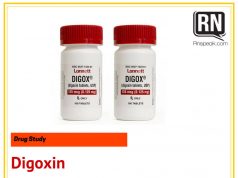Betamethasone
Betnelan , Celestone
Betamethasone Acetate and Betamethasone Sodium Phosphate
Celestone Soluspan
Betamethasone Benzoate
Beben,Benisone,Uticort
Betamethasone Dipropionate
Alphatrex,Diprolene,Diprosone,Maxivate
Betamethasone Sodium Phospahete (PH 8.5)
Betameth, Betnesol , Celestone Phosphate, Celestone S, Cel-U-Jec, Selestoject
Betamethasone Valerate
Betacort, Betaderm,Betatrex,Beta-Val,Betnovate,Celestoderm,Ectosone Lotion,Luxiq,Metaderm,Novobetamet,Valisone,Valisone,Scalp Lotion,Valnac,Psorion cream
Classifications:hormone and synthetic substitute; adrenal corticosteroid; glucocorticoid; antiinflammatory
Prototype:Hydrocortisone
Pregnancy Category:C
Availability
0.6 mg tablets;0.6 mg/5 mL syrup;3 mg acetate,3 mg sodium phosphate/mL suspension;4 mg/mL injection;0.1% ointment;0.01%,0.05%,0.1% cream;0.1% lotion;1.2 mg/g foam
Actions
Synthetic,long-acting glucocorticoid with minor mineralocorticoid properties but strong immunosuppressive,antiinflammatory,and metabolic actions.
Therapeutic effects
Relieves antiinflammatory manifestations and is an immunosuppressive agent.
Uses
Reduces serum calcium in hypercalcemia, suppresses undesirable inflammatory or immune responses, produces temporary remission in nonadrenal disease, and blocks ACTH production in diagnostic tests. Topical use provides relief of inflammatory manifestations of corticosteroid-responsive dermatoses.
Unlabeled uses
Prevention of neonatal respiratory distress syndrome (hyaline membrane disease).
Contraindications
In patients with systemic fungal infections.Pregnancy (category C),lactation, vaccines.
Cautious use
Ocular herpes simplex; concomitant use of aspirin; osteoporosis; diverticulitis, nonspecific ulcerative colitis, abscess or other pyrogenic infection, peptic ulcer disease; hypertension; renal insufficiency; myasthenia gravis.
Route & Dosage
Antiinflammatory Agent
adult:PO 0.6–7.2 mg/d
IM/IV 0.5–9 mg/d as sodium phosphate
Topical
child:PO 0.0175–0.25 mg/kg/d or 0.5–0.75 mg/m2/d divided q6–8h
child:IM 0.0175–0.125 mg/kg/d or 0.5–0.75 mg/m2/d divided q6–8h
Respiratory Distress Syndrome
adult:IM 2 mL of sodium phosphate to mother once daily 2–3 d before delivery
Administration
Oral
- Give with food or milk to lessen stomach irritation.
IntraarticularIntramuscularIntralesional
- Use Celestone Soluspan for intraarticular, IM, and intralesional injection. The preparation is not intended for IV use. Do not mix with diluents containing preservatives (e.g., parabens, phenol).
- Use 1% or 2% lidocaine hydrochloride if prescribed. Withdraw betamethasone mixture first, then lidocaine; shake syringe briefly.
Intravenous
PREPARE direct:Give by direct IV undiluted or further diluted in D5W or NS.
ADMINISTER direct:Give at a rate of 1 dose/min.
Incompatibilities Solution / Additive:Amobarbital,ampicillin,bleomycin,colistimethate, dimenhydrinate, doxapram, doxorubicin, ephedrine, heparin, hydralazine, metaraminol, methicillin, nafcillin, pentobarbital, phenobarbital, prochlorperazine, promethazine, secobarbital, tetracyclines.Y-site:Ergotamine,phenytoin.
Adverse effects
BodyWhole:Hypersensitivity or anaphylactoid reactions; aggravation or masking of infections; malaise, weight gain, obesity. Most adverse effects are dose and treatment duration dependent.
CNS:Vertigo, headache, nystagmus, ataxia (rare), increased intracranial pressure with papilledema (usually after discontinuation of medication), mental disturbances, aggravation of preexisting psychiatric conditions, insomnia.
CV:Hypertension; syncopal episodes, thrombophlebitis, thromboembolism or fat embolism, palpitation, tachycardia, necrotizing angiitis; CHF.
Endocrine:Suppressed linear growth in children, decreased glucose tolerance; hyperglycemia, manifestations of latent diabetes mellitus; hypocorticism; amenorrhea and other menstrual difficulties.
SpecSenses:Posterior subcapsular cataracts (especially in children), glaucoma, exophthalmos, increased intraocular pressure with optic nerve damage, perforation of the globe, fungal infection of the cornea, decreased or blurred vision.
Metabolic:Hypocalcemia; sodium and fluid retention; hypokalemia and hypokalemic alkalosis; negative nitrogen balance.
GI:Nausea, increased appetite, ulcerative esophagitis, pancreatitis, abdominal distention, peptic ulcer with perforation and hemorrhage, melena; decreased serum concentration of vitamins A and C.
Hematologic:Thrombocytopenia.
Musculoskeletal:Osteoporosis, compression fractures, muscle wasting and weakness, tendon rupture, aseptic necrosis of femoral and humeral heads, (all resulting from long-term use).
Skin:Skin thinning and atrophy, acne, impaired wound healing; petechiae, ecchymosis, easy bruising; suppression of skin test reaction; hypopigmentation or hyperpigmentation, hirsutism, acneiform eruptions, subcutaneous fat atrophy; allergic dermatitis, urticaria, angioneurotic edema, increased sweating.
Urogenital:Increased or decreased motility and number of sperm; urinary frequency and urgency, enuresis. With parenteral therapy, IV site: Pain, irritation, necrosis, atrophy, sterile abscess; Charcot-like arthropathy following intraarticular use; burning and tingling in perineal area (after IV injection).
Nursing implications
Assessment & Drug Effects
- Assess therapeutic effectiveness. Response following intraarticular, intralesional, or intrasynovial administration occurs within a few hours and persists for 1–4 wk. Following IM administration response occurs in 2–3 h and persists for 3–7 d.
Patient & Family Education
- Monitor weight at least weekly.
- Discontinued slowly after systemic use of <=1 wk. Abrupt withdrawal, especially following high doses or prolonged use, can cause dizziness, nausea, vomiting, fever, muscle and joint pain, weakness.
- Do not breast feed while taking this drug.







